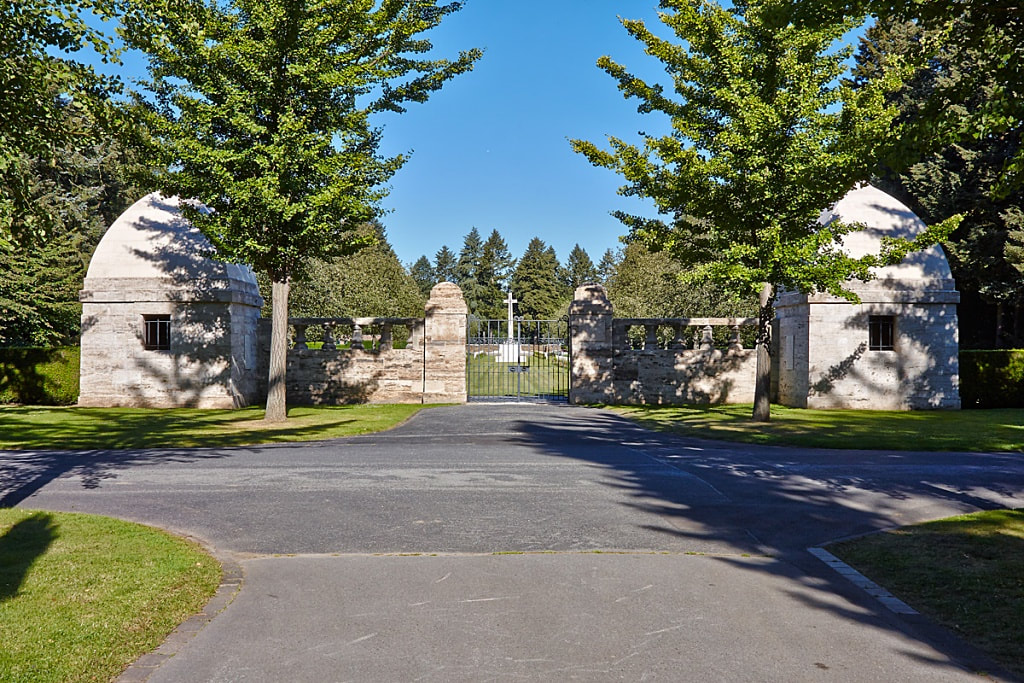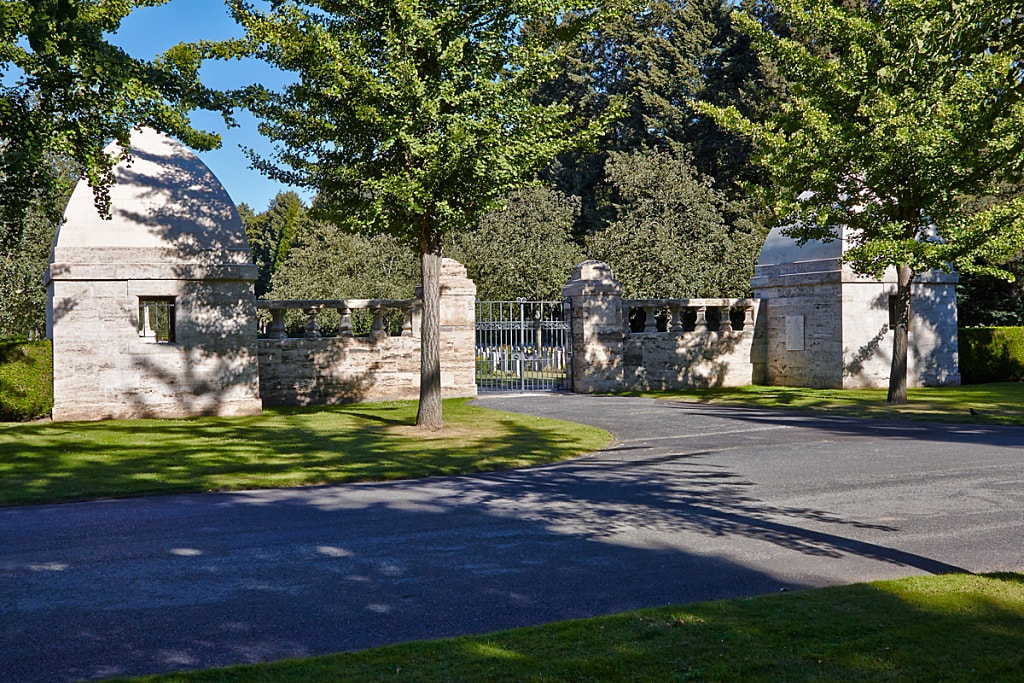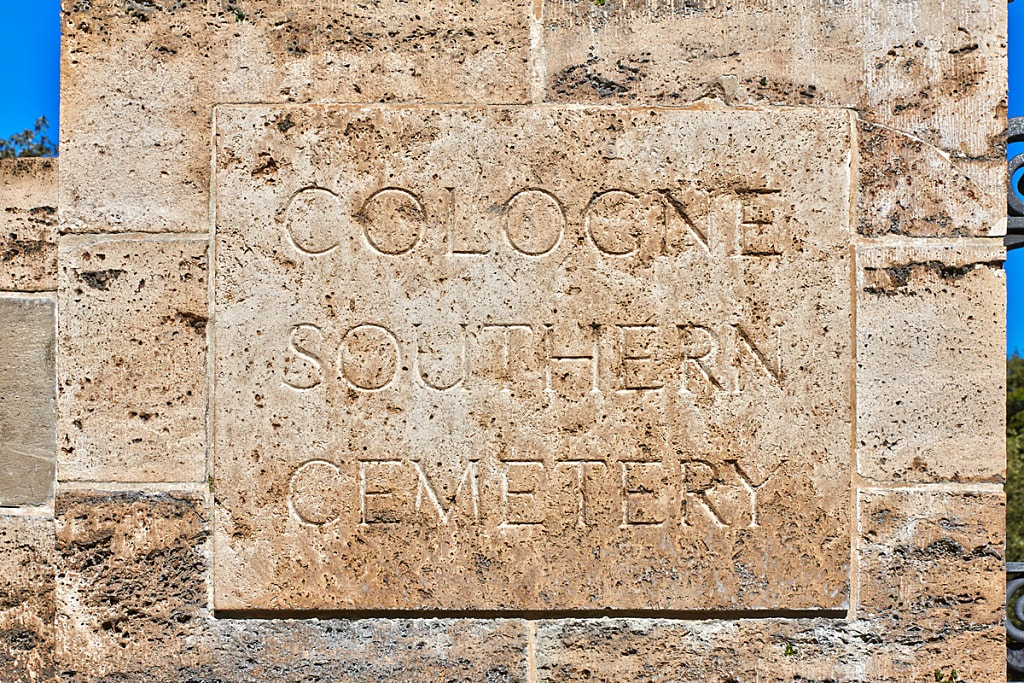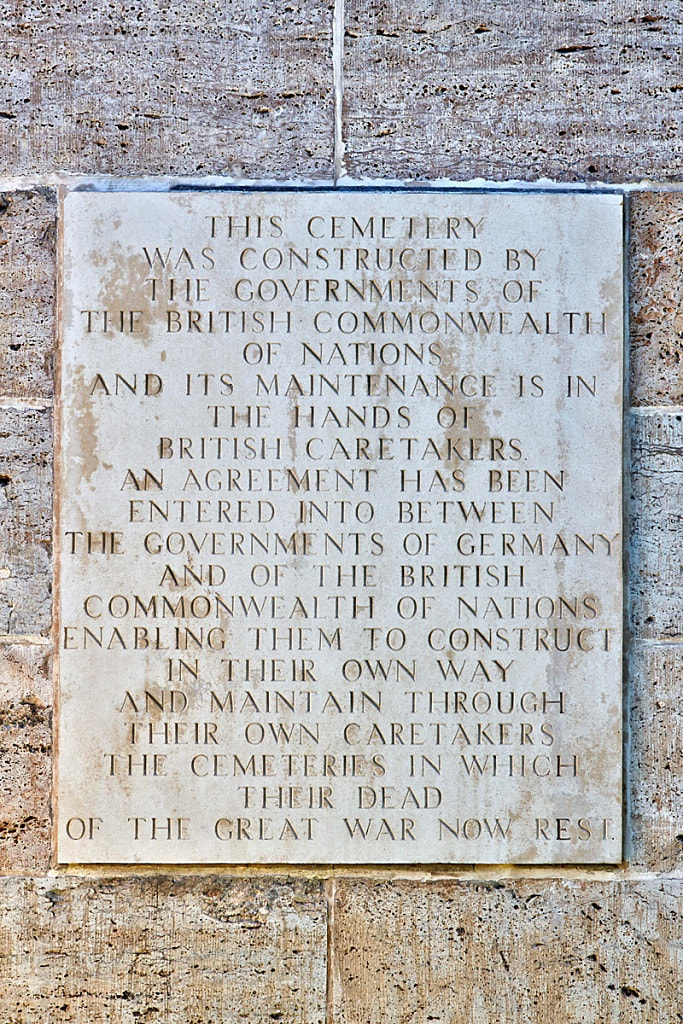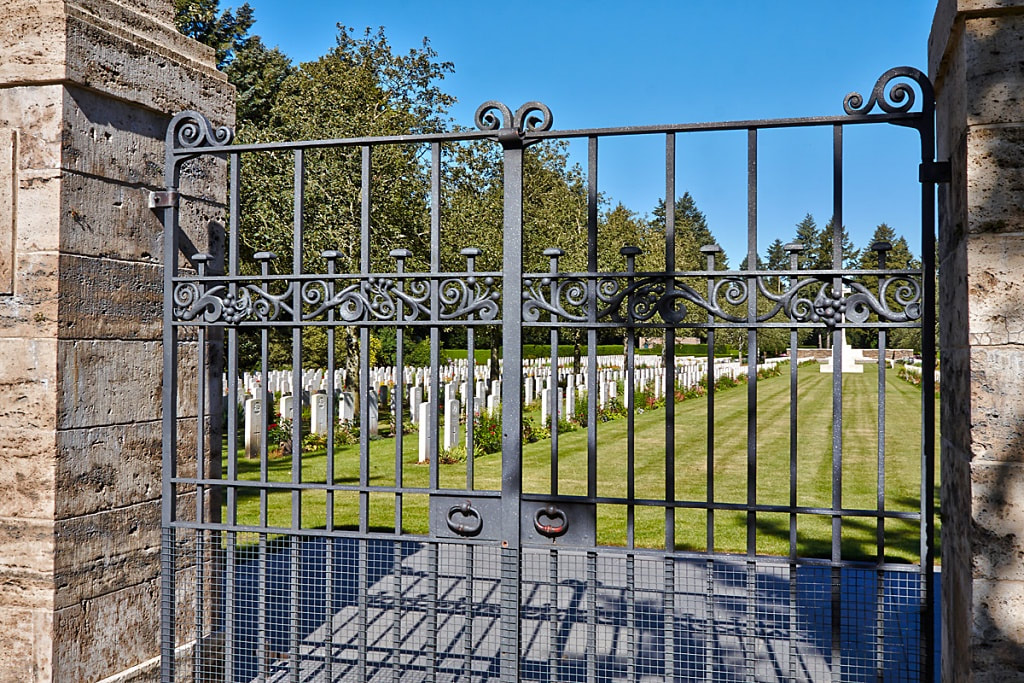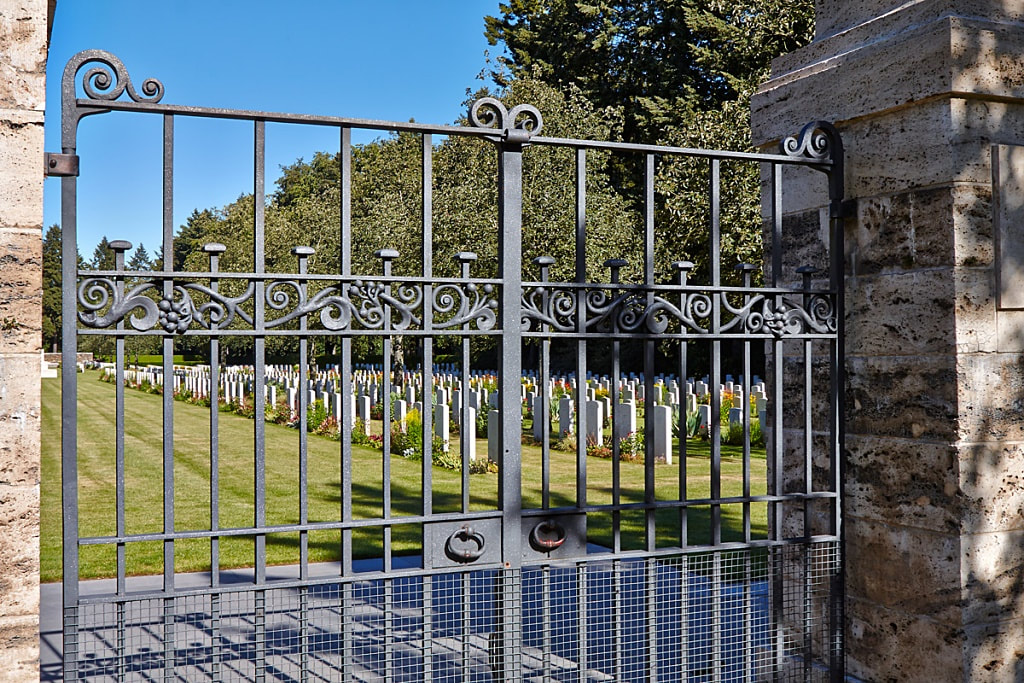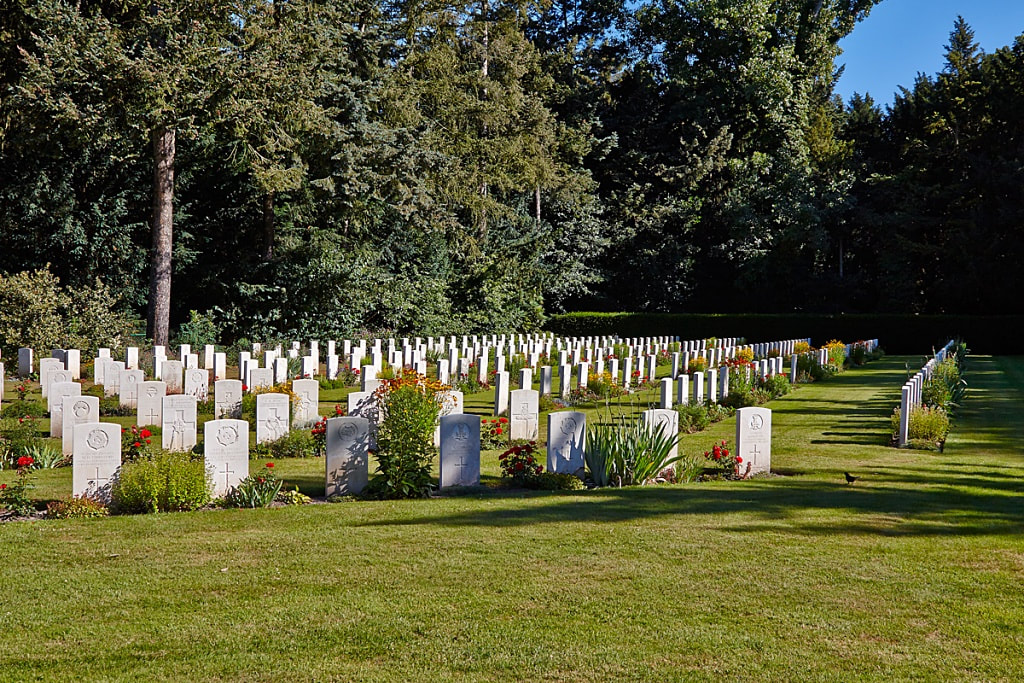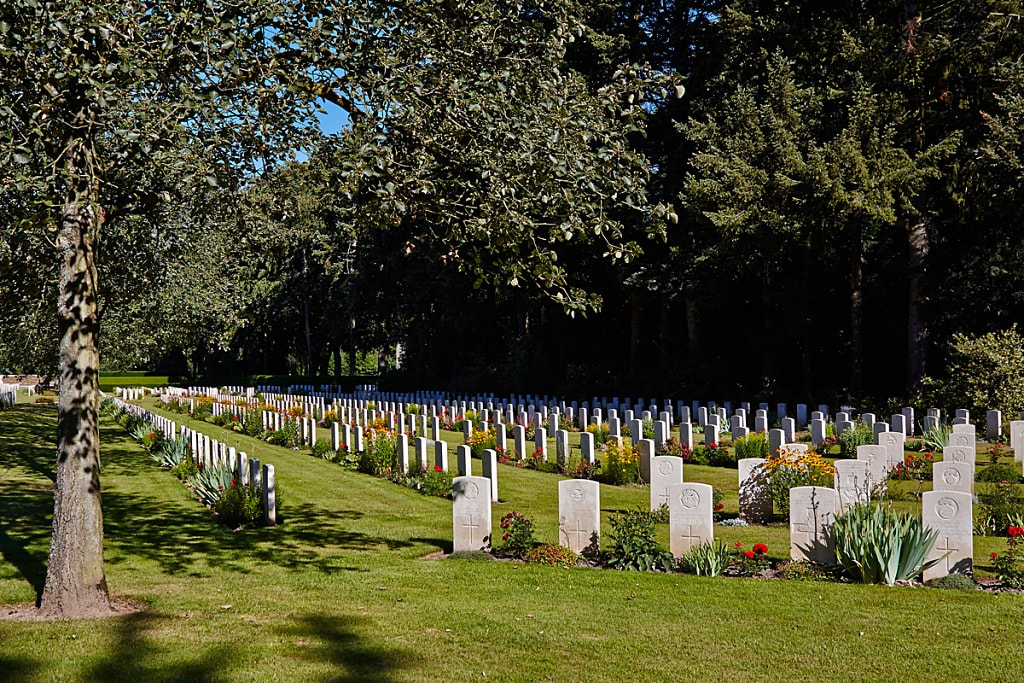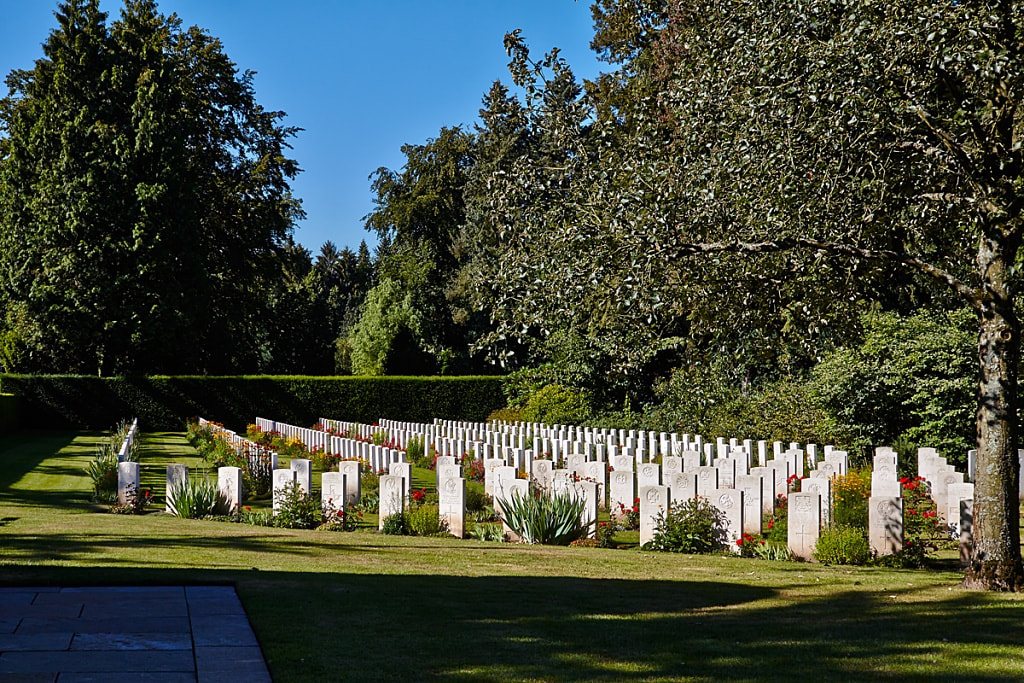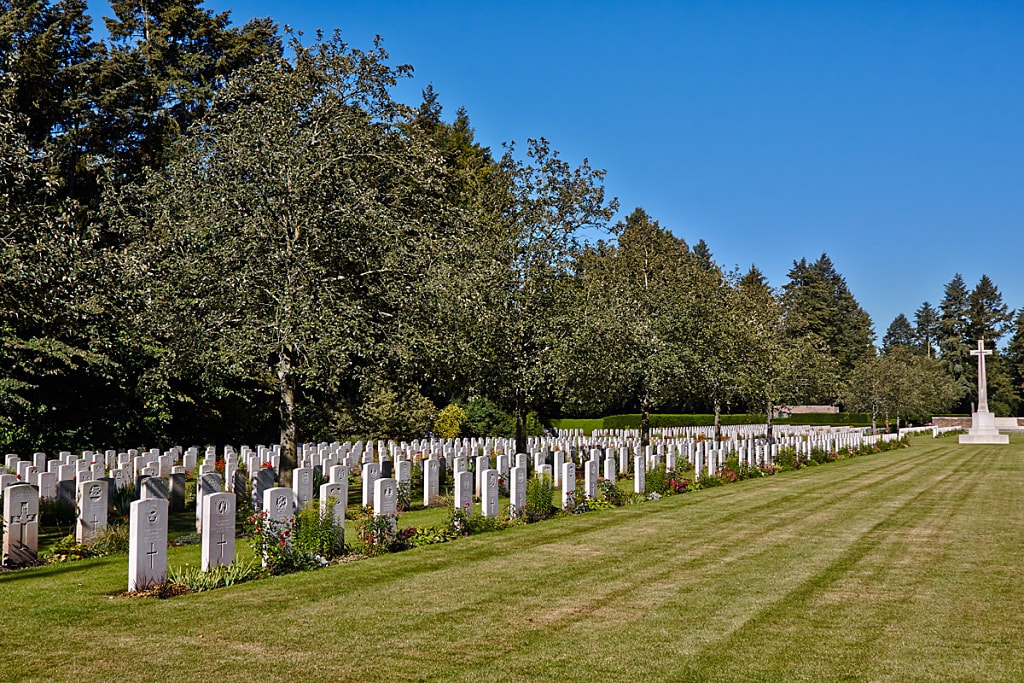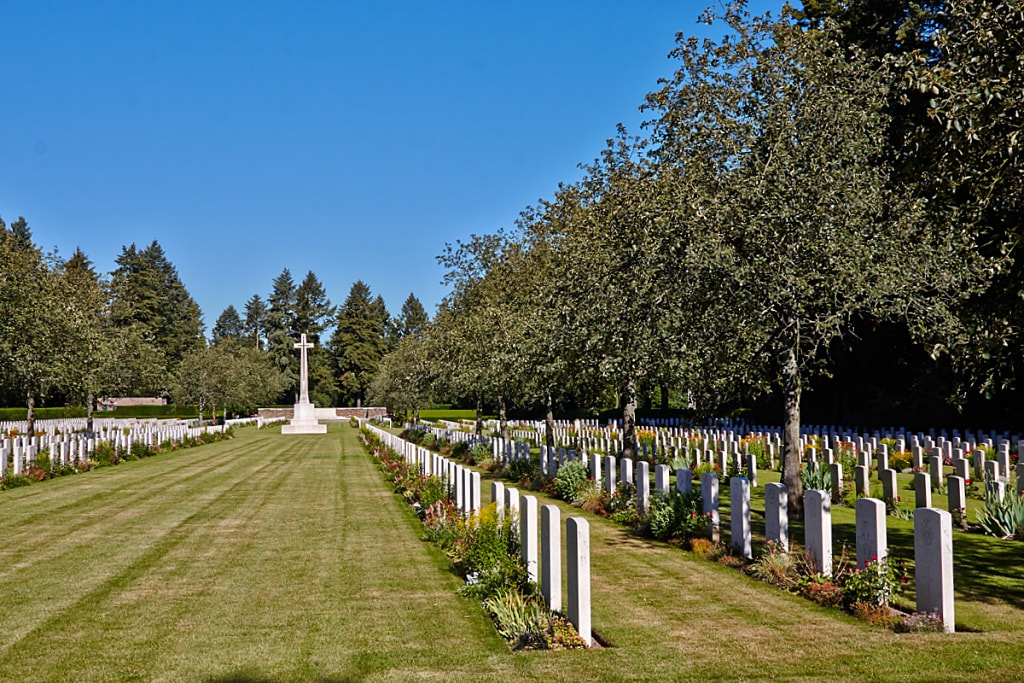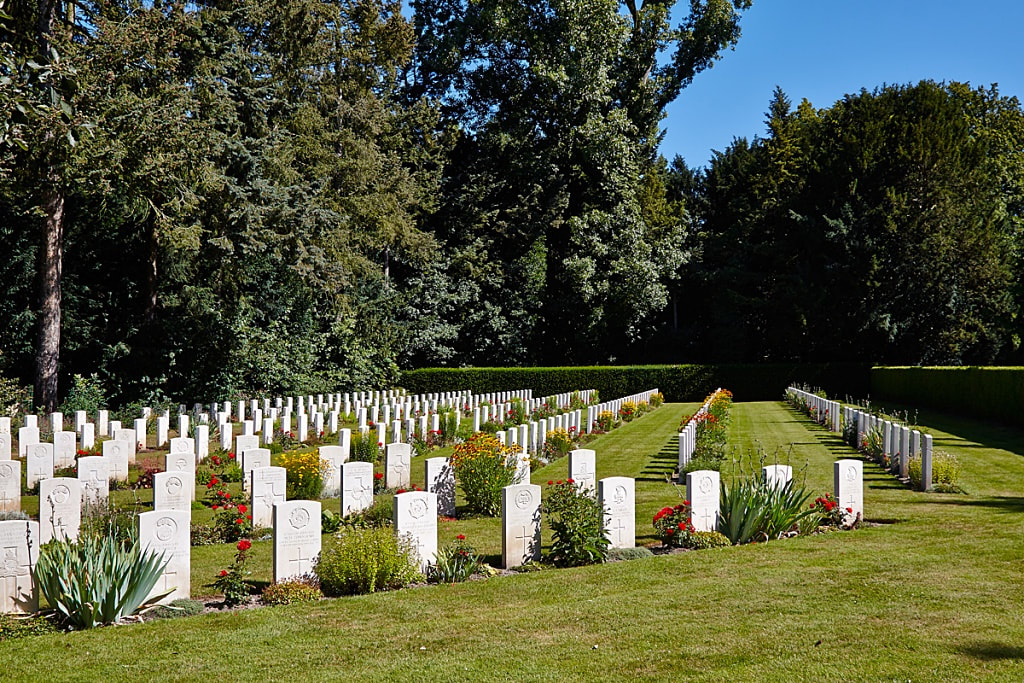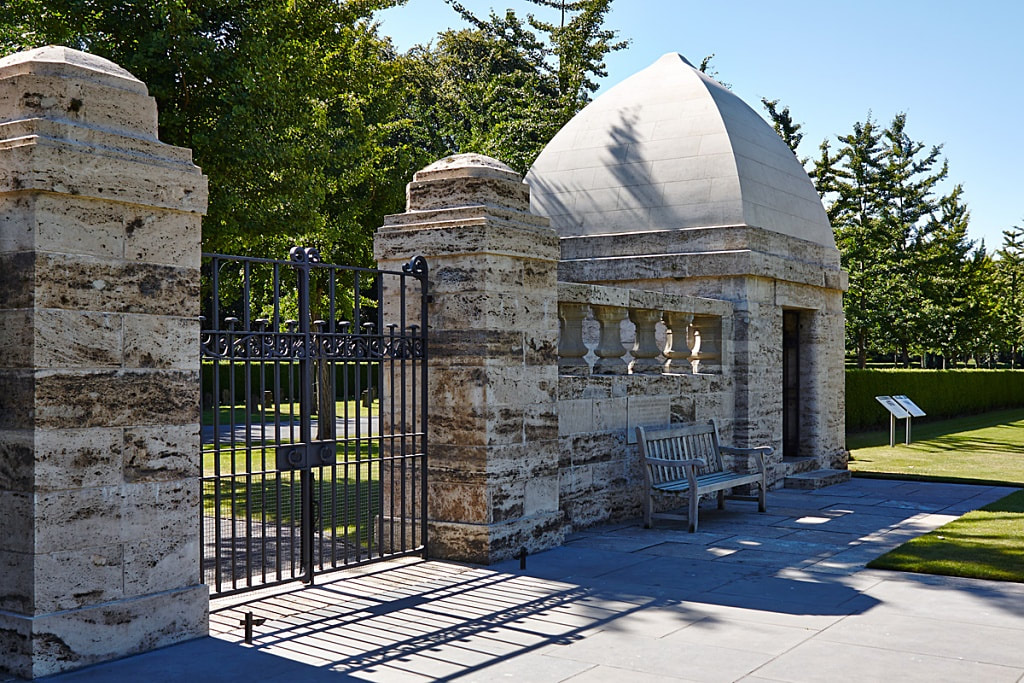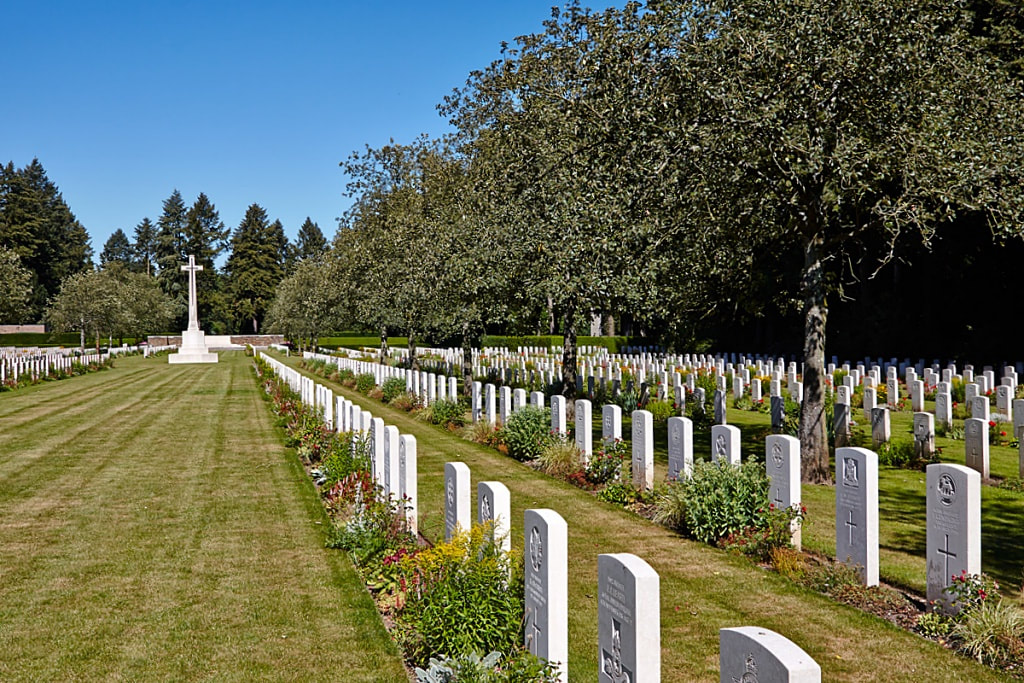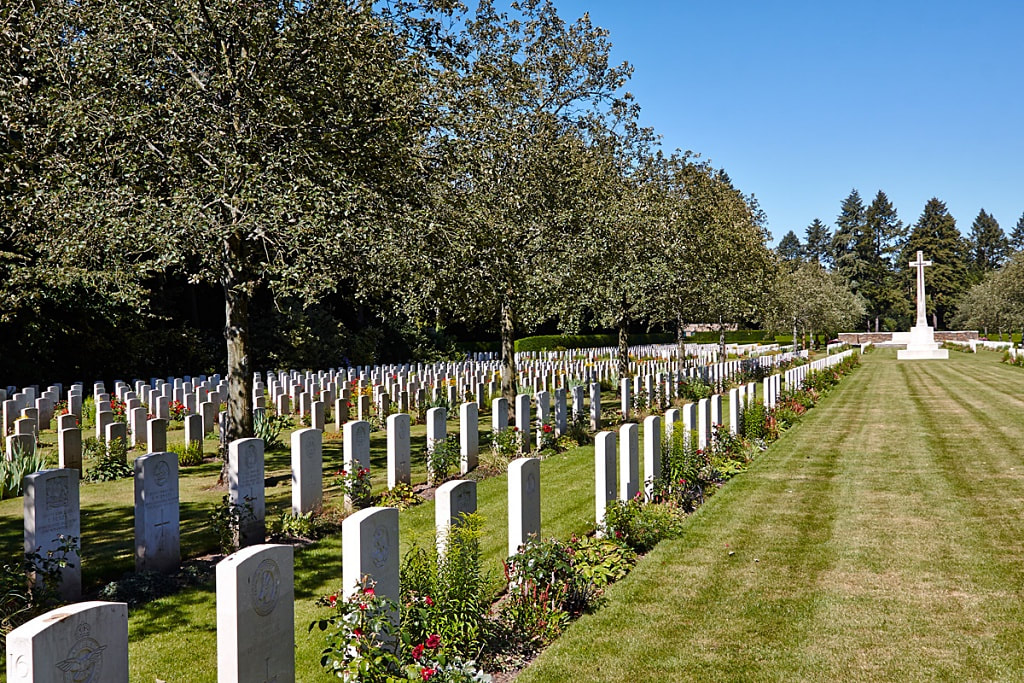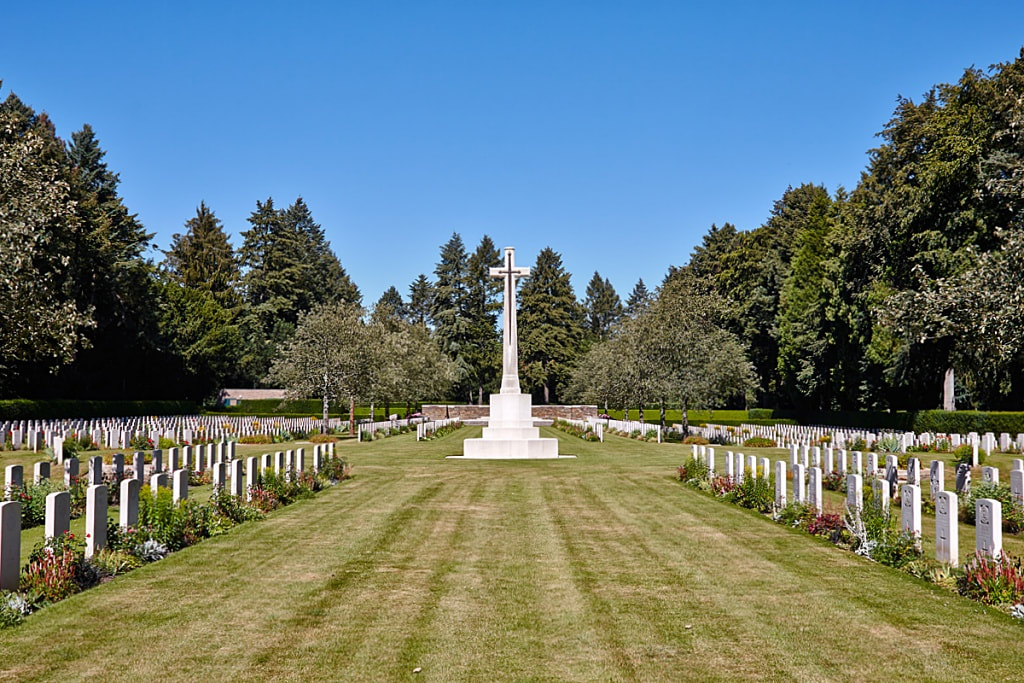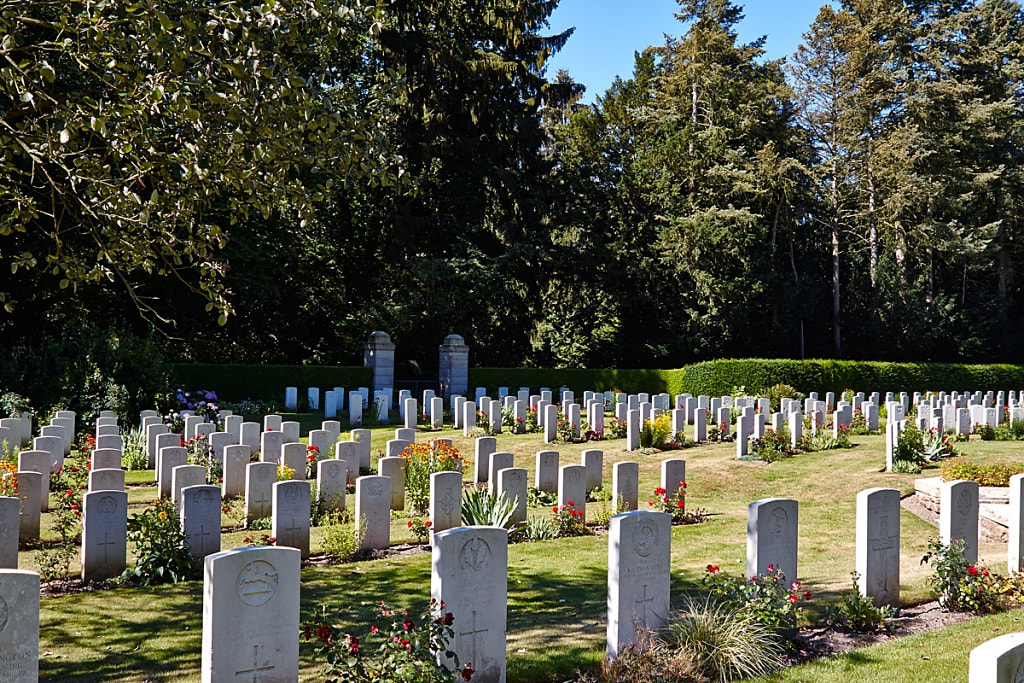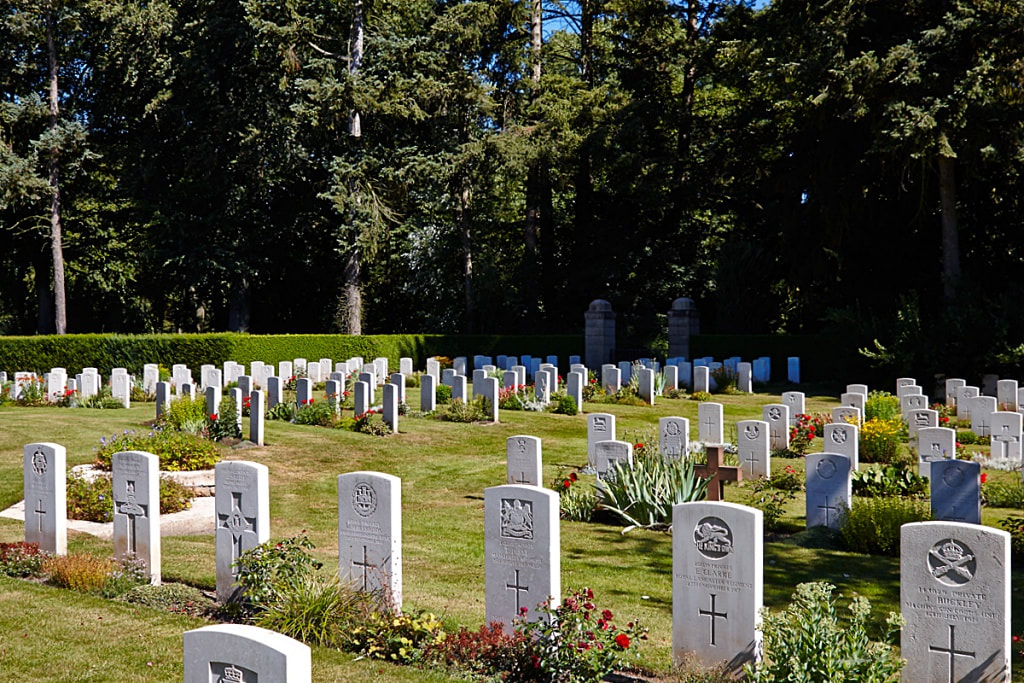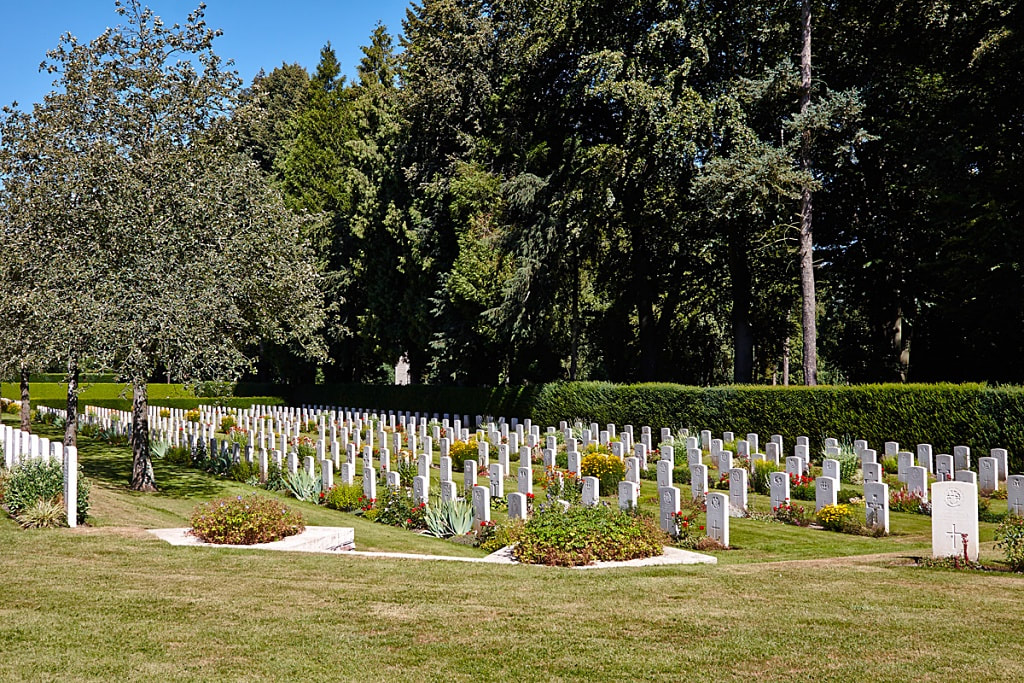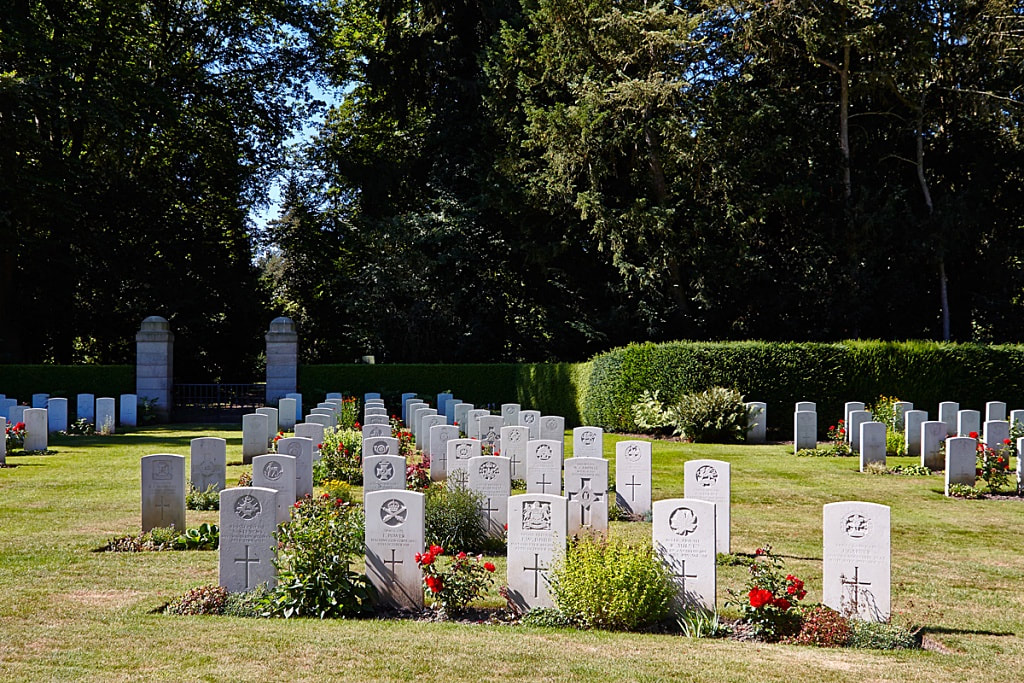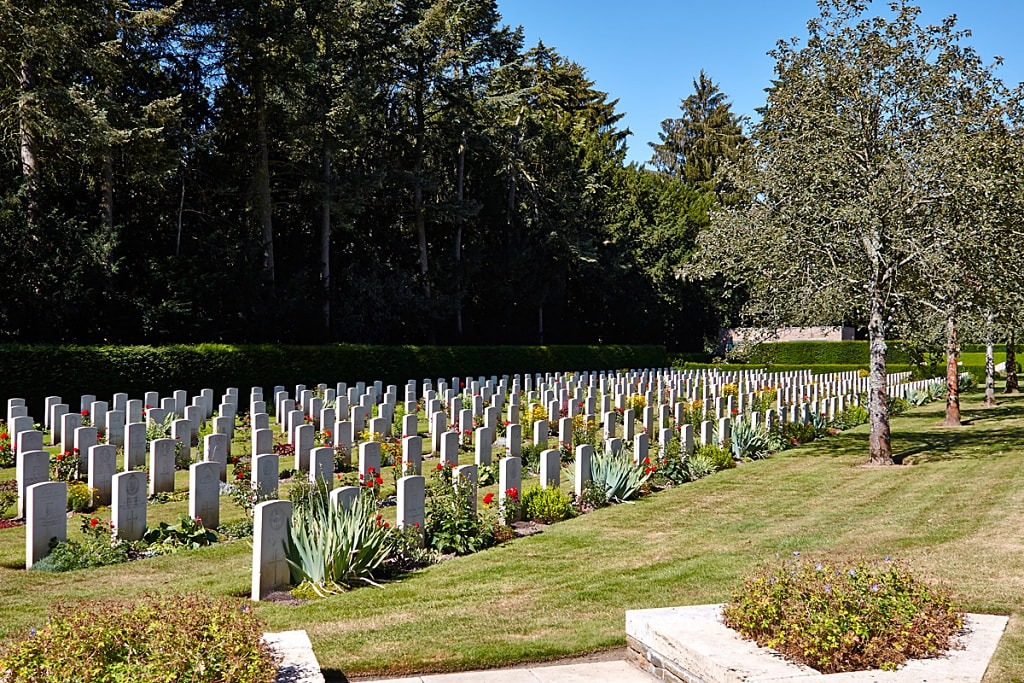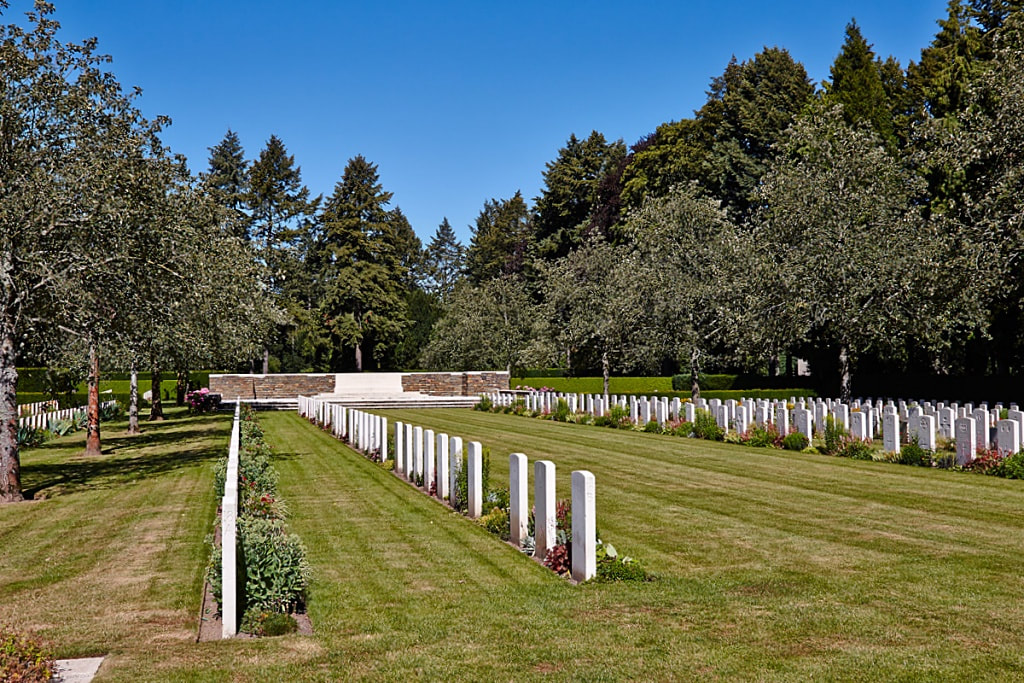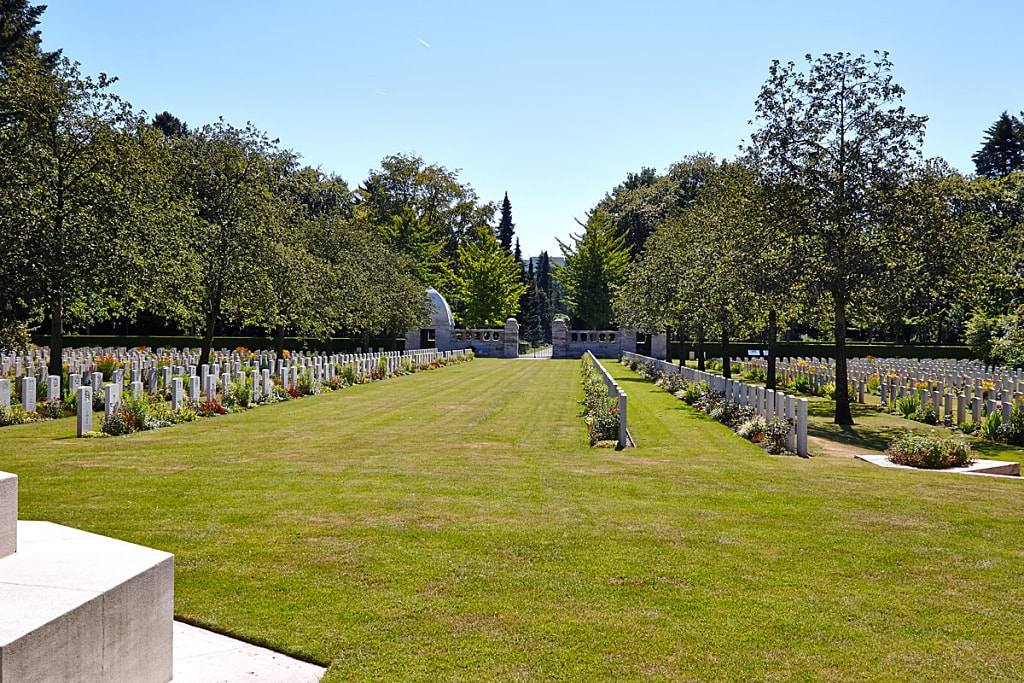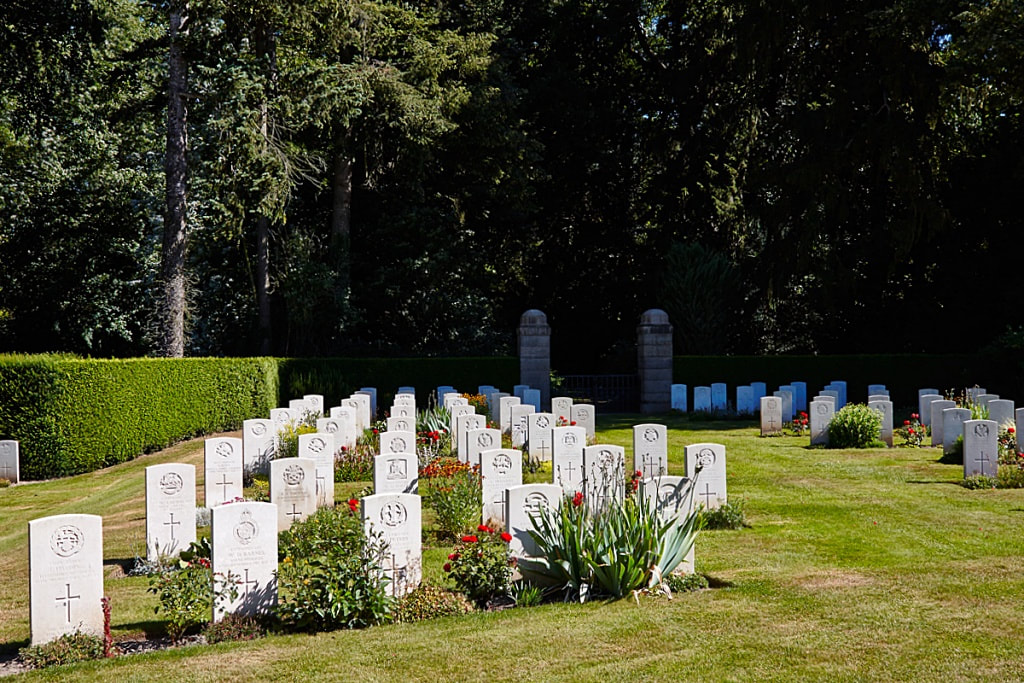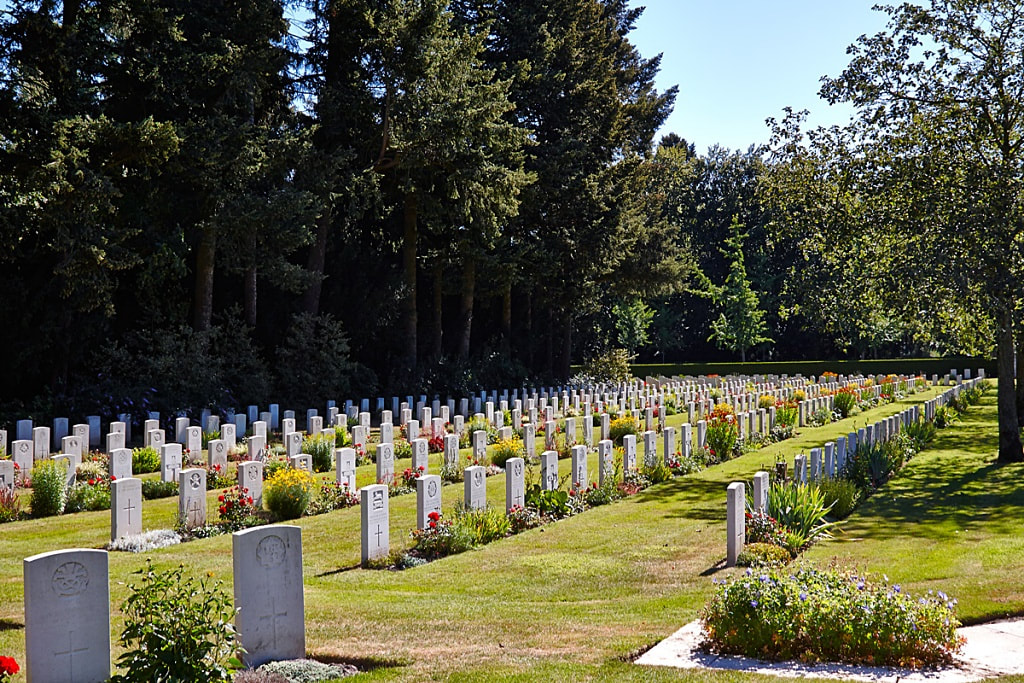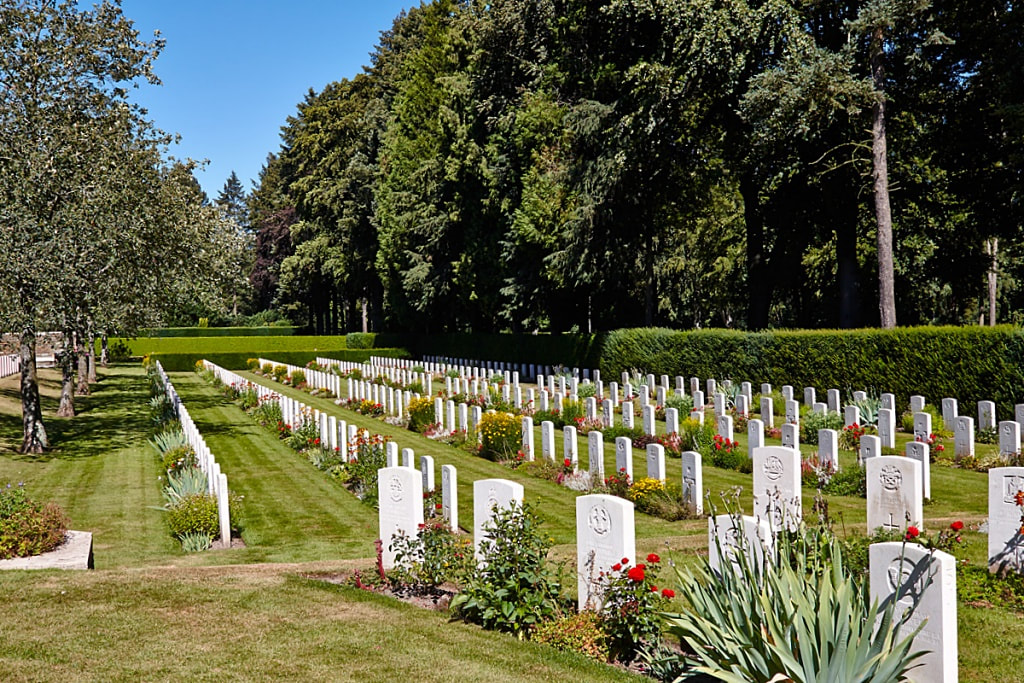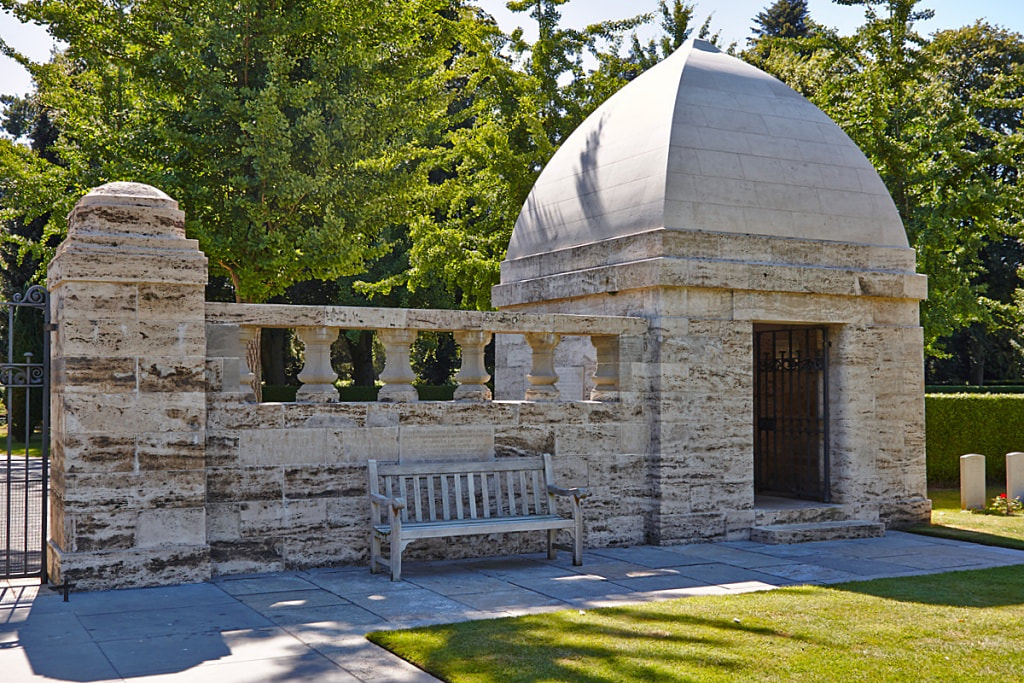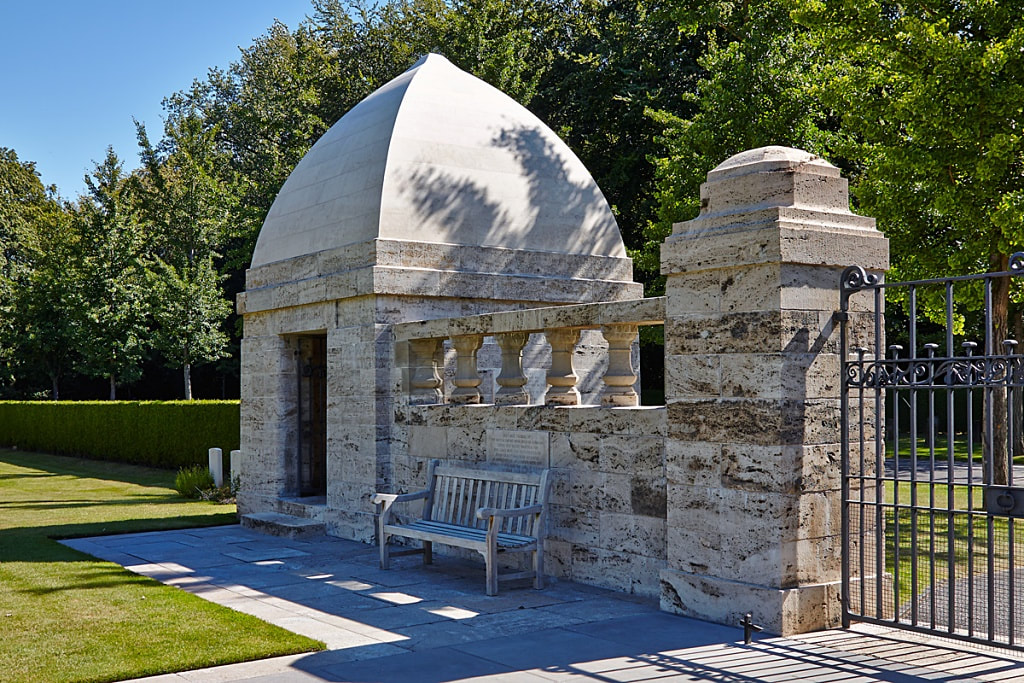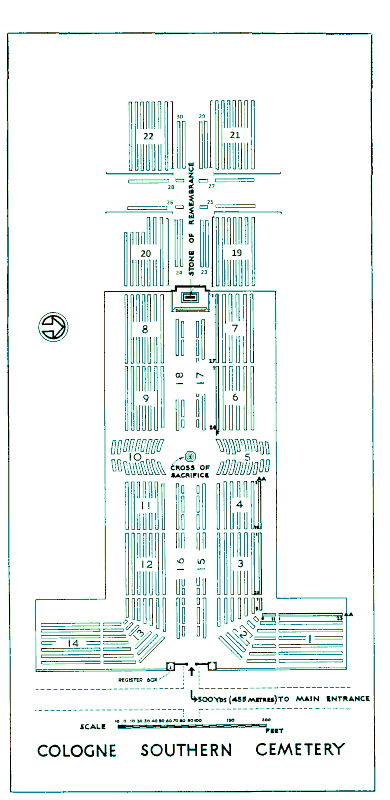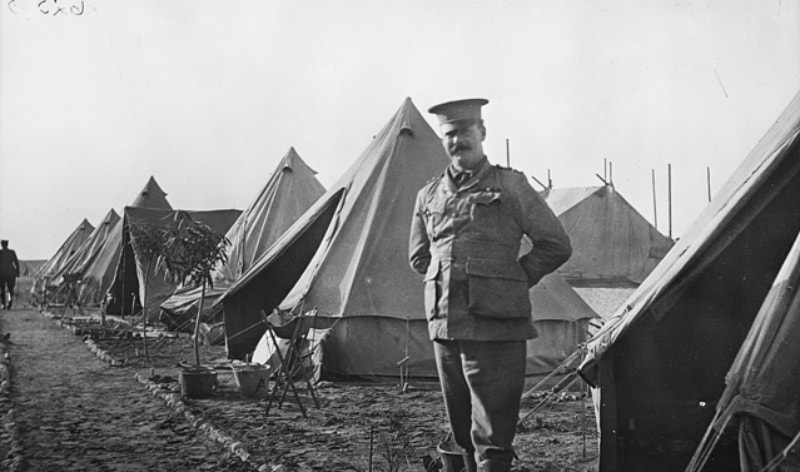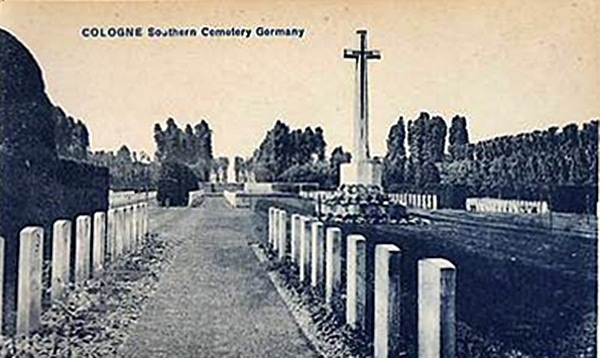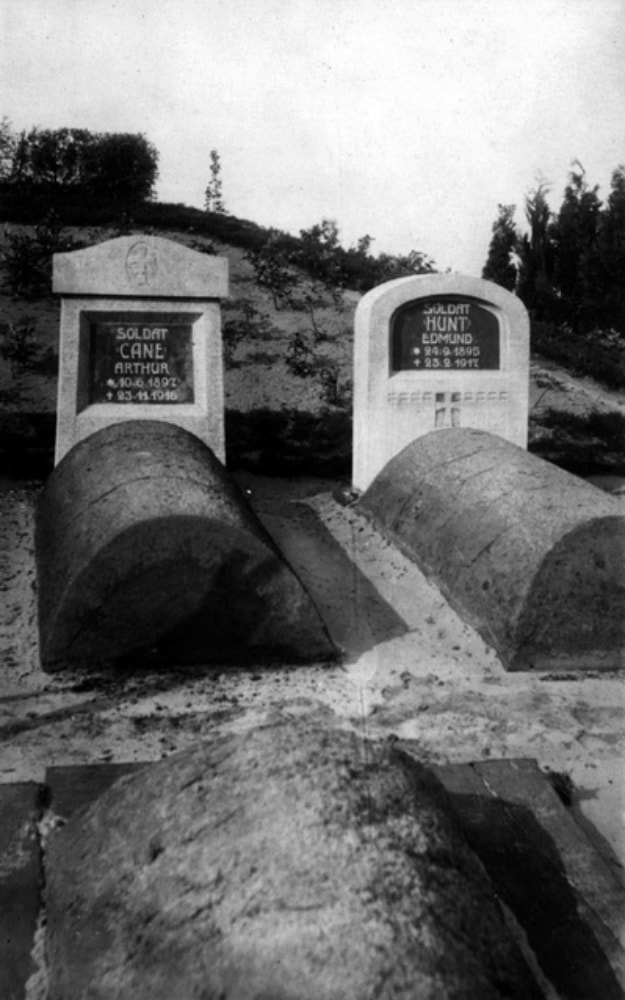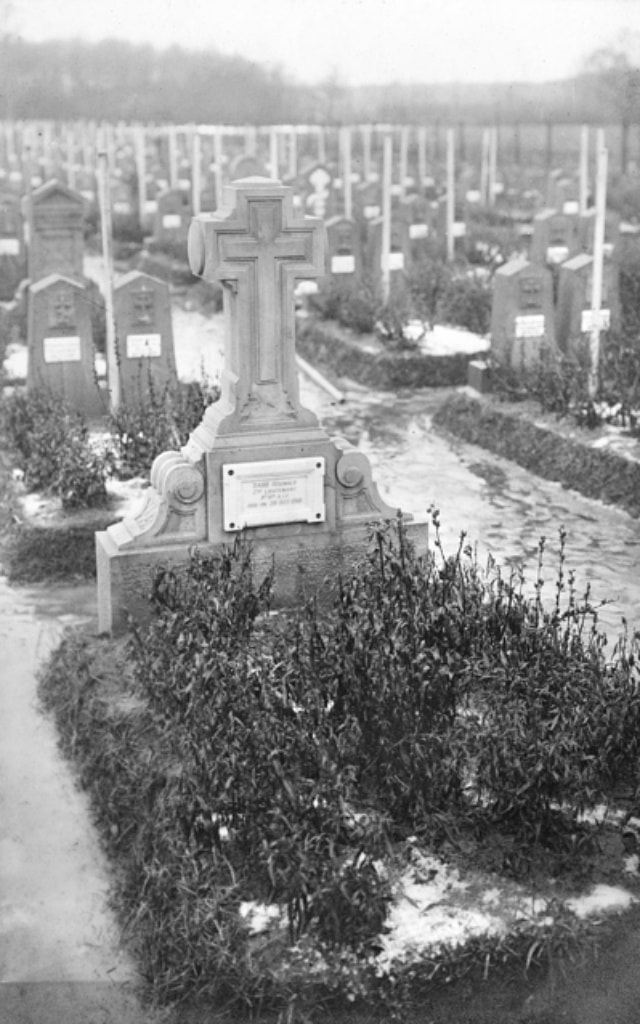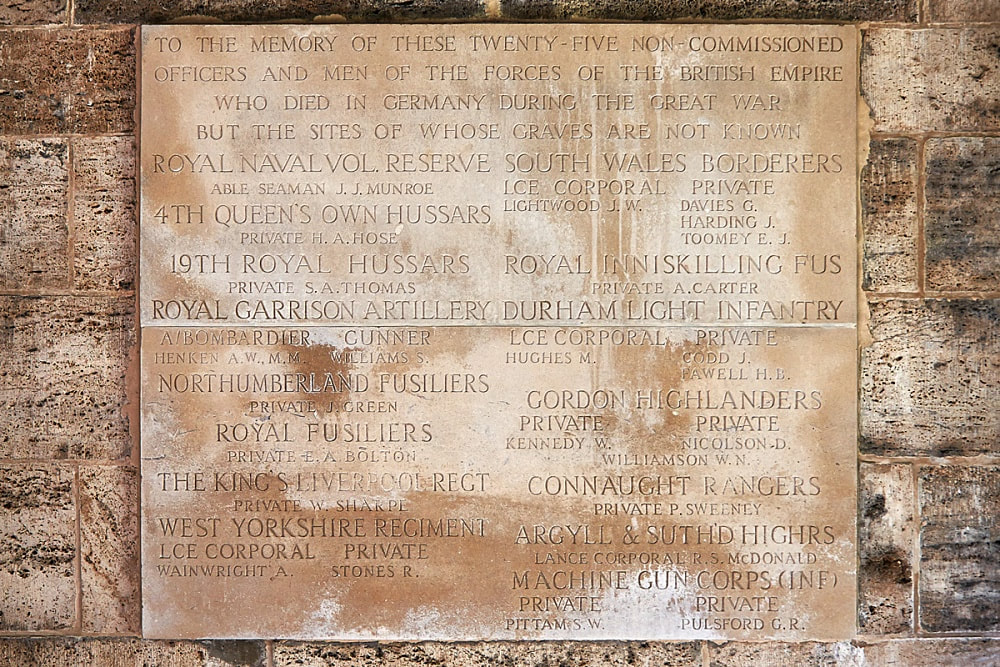COLOGNE SOUTHERN CEMETERY & COLOGNE MEMORIAL
Nordrhein-Westfalen
Germany
Location Information
The city of Koln lies in the west of Germany approx 30kms to the north of Bonn.
Cologne Southern Cemetery is located within the civilian cemetery, Sudfriedhof Koln.
From the A4 Aachen to Olpe motorway take exit 11 (Ausfahrt 11) KOLN-KLETTENBERG.
After approx 700m turn right direction ZENTRUM onto the MILITARRINGSTRASSE, follow the road for approx 2kms and turn left onto the BRUHLERSTRASSE.
Continue for approx 1km then turn left onto MARKUSSTRASSE. After approx 700m you come to HONINGER PLATZ where the main entrance to the cemetery is.
Cologne Southern Cemetery can be reached by following the main cemetery road.
Visitors should note that vehicle access is not always guaranteed and Cologne Southern Cemetery is a 10 minute walk from the main cemetery entrance
The cemetery address is:-
Sudfriedhof Koln
Honinger Platz
50969 Cologne
Germany
GPS Location is:- N 50 54 02 E 06 56 38
Visiting Information
Visitors should note that vehicle access is not always guaranteed and Cologne Southern Cemetery is a 10 minute walk from the main cemetery entrance
OPENING TIMES:
April to October: 07.00 to 20.00
November to March: 08.00 to 17.00
Wheelchair access possible via side entrances.
Historical Information
Cologne Southern Cemetery
More than 1,000 Allied prisoners and dozens of German servicemen were buried in Cologne Southern Cemetery during the First World War. Commonwealth forces entered Cologne on 6 December 1918, less than a month after the Armistice, and the city was occupied under the terms of the Treaty of Versailles until January 1926. During this period the cemetery was used by the occupying garrison. In 1922 it was decided that the graves of Commonwealth servicemen who had died all over Germany should be brought together into four permanent cemeteries at Kassel, Berlin, Hamburg and Cologne. Over the course of the following year, graves were transferred to Cologne Southern Cemetery from over 180 different burial grounds in Hanover, Hessen, the Rhine and Westphalia.
There are now almost 2,500 First World War servicemen buried or commemorated in the Commonwealth plots at Cologne. The Commonwealth section of the cemetery also contains 132 Second World War graves, mostly those of servicemen who died with the occupying forces. There are, in addition, 676 non-war graves and 29 burials of other nationalities.
Total Burials: 3,324.
World War One Identified Casualties: United Kingdom 2,322, Canada 45, Australia 34, New Zealand 34, India 14, South Africa 14, Belgium 1. Total 2,464.
World War Two Identified Casualties: United Kingdom 125, Canada 7. Total 132.
Cemetery pictures © Geerhard Joos
The city of Koln lies in the west of Germany approx 30kms to the north of Bonn.
Cologne Southern Cemetery is located within the civilian cemetery, Sudfriedhof Koln.
From the A4 Aachen to Olpe motorway take exit 11 (Ausfahrt 11) KOLN-KLETTENBERG.
After approx 700m turn right direction ZENTRUM onto the MILITARRINGSTRASSE, follow the road for approx 2kms and turn left onto the BRUHLERSTRASSE.
Continue for approx 1km then turn left onto MARKUSSTRASSE. After approx 700m you come to HONINGER PLATZ where the main entrance to the cemetery is.
Cologne Southern Cemetery can be reached by following the main cemetery road.
Visitors should note that vehicle access is not always guaranteed and Cologne Southern Cemetery is a 10 minute walk from the main cemetery entrance
The cemetery address is:-
Sudfriedhof Koln
Honinger Platz
50969 Cologne
Germany
GPS Location is:- N 50 54 02 E 06 56 38
Visiting Information
Visitors should note that vehicle access is not always guaranteed and Cologne Southern Cemetery is a 10 minute walk from the main cemetery entrance
OPENING TIMES:
April to October: 07.00 to 20.00
November to March: 08.00 to 17.00
Wheelchair access possible via side entrances.
Historical Information
Cologne Southern Cemetery
More than 1,000 Allied prisoners and dozens of German servicemen were buried in Cologne Southern Cemetery during the First World War. Commonwealth forces entered Cologne on 6 December 1918, less than a month after the Armistice, and the city was occupied under the terms of the Treaty of Versailles until January 1926. During this period the cemetery was used by the occupying garrison. In 1922 it was decided that the graves of Commonwealth servicemen who had died all over Germany should be brought together into four permanent cemeteries at Kassel, Berlin, Hamburg and Cologne. Over the course of the following year, graves were transferred to Cologne Southern Cemetery from over 180 different burial grounds in Hanover, Hessen, the Rhine and Westphalia.
There are now almost 2,500 First World War servicemen buried or commemorated in the Commonwealth plots at Cologne. The Commonwealth section of the cemetery also contains 132 Second World War graves, mostly those of servicemen who died with the occupying forces. There are, in addition, 676 non-war graves and 29 burials of other nationalities.
Total Burials: 3,324.
World War One Identified Casualties: United Kingdom 2,322, Canada 45, Australia 34, New Zealand 34, India 14, South Africa 14, Belgium 1. Total 2,464.
World War Two Identified Casualties: United Kingdom 125, Canada 7. Total 132.
Cemetery pictures © Geerhard Joos
Commonwealth Prisoners of War in Germany during the First World War
Between the outbreak of war in August 1914 and the Armistice of November 1918, the German forces captured almost 300,000 Commonwealth servicemen on the Western Front. Approximately one third of these prisoners were held in German occupied territory in France and Belgium, but most were transported to camps located throughout Germany. In common with the other belligerent states, Germany was poorly equipped to house, feed and clothe large numbers of enemy troops, but prisoners of war had been granted certain rights under international agreements established at Geneva in 1864 and at The Hague in 1899 and 1907. The Red Cross also monitored conditions in the camps and ensured that food, clothing, and personal correspondence sent from Britain was safely delivered to prisoners. In June 1917, and again in July 1918, the British and German governments agreed to exchange prisoners who were too badly wounded to fight again, and hundreds of prisoners were repatriated through the Netherlands. Finally, the fear that the thousands of German prisoners in Britain and France would be mistreated in retaliation meant that Allied POWs often enjoyed quite humane treatment. This was especially the case for officer prisoners, who were segregated into separate camps and not forced to work.
Despite these various checks on the mistreatment of prisoners, conditions in German camps varied widely and as many as 12,000 Commonwealth servicemen died in captivity. Some of these men were badly wounded when taken prisoner and died shortly after arriving in Germany. Some prisoners also died as a result of violence perpetrated by their captors, but although violence was common, particularly during the first year of the war, the killing of prisoners was rare. Non-commissioned officers and privates were often forced to work and some died of exhaustion or accidents while labouring in coalmines, stone quarries or steel works. Yet by far the most common cause of prisoner death in wartime Germany was disease. Prisoners weakened by wounds, poor diet, or fatigue were particularly susceptible to the effects of disease and an outbreak of typhus in 1915 and the influenza epidemic of 1918 had a devastating effect on the Allied prisoner population.
*The following cemeteries are among those from which graves were brought to Cologne:
AACHEN MILITARY CEMETERY, 197 burials of sailors 1914-1919.
BONN (POPPELSDORF) CEMETERY, 133 service and one civilian burial, all of 1919. The 47th General Hospital and the 21st Casualty Clearing Station were posted at Bonn.
BUDERICH (FORT BLUCHER) PRISONERS OF WAR CEMETERY, 39 burials of 1914-1919.
COBLENZ FRENCH MILITARY CEMETERY, KARTHAUSE, 59 burials of 1915-1918. Coblenz was occupied by United States troops in December 1918.
DORTMUND SOUTH-WESTERN CEMETERY, 53 burials of 1914-1918.
DUISBURG TOWN CEMETERY, 35 burials of 1914-1919.
DULMEN PRISONERS OF WAR CEMETERY, 96 burials of 1915-1918.
DUREN NEW TOWN CEMETERY, 79 burials, mostly of 1919. The 11th Stationary Hospital and the 17th Casualty Clearing Station were posted at Duren.
DUSSELDORF NORTH CEMETERY, 24 burials of 1915-1918.
ESSEN SOUTH-WESTERN CEMETERY, 21 burials of 1917-1918.
EUSKIRCHEN NEW TOWN CEMETERY, 75 service and one civilian burials of 1918-1919. The 42nd Stationary Hospital and the 47th Casualty Clearing Station were posted at Euskirchen.
FRIEDRICHSFELD PRISONERS OF WAR CEMETERY, 70 burials of 1916-1918.
FRIEMERSHEIM CEMETERY, 20 burials of 1918.
GELSENKIRCHEN WEST CEMETERY, 21 burials of 1917-1918.
GEROLSTEIN MILITARY CEMETERY, 25 burials of 1918.
JULICH MILITARY, 39 burials of 1915-1918.
MULHEIM-AM-RUHR OLD TOWN CEMETERY, 49 burials of 1915-1918.
MUNSTER (HAUSPITAL) PRISONERS OF WAR CEMETERY, 161 burials of 1914-1918.
RECKLINGHAUSEN PROTESTANT, CATHOLIC AND SOUTH CEMETERIES, 26 burials of 1916-1918.
TRIER TOWN CEMETERY, 48 burials of 1917-1918.
(updated - August 2012)
Between the outbreak of war in August 1914 and the Armistice of November 1918, the German forces captured almost 300,000 Commonwealth servicemen on the Western Front. Approximately one third of these prisoners were held in German occupied territory in France and Belgium, but most were transported to camps located throughout Germany. In common with the other belligerent states, Germany was poorly equipped to house, feed and clothe large numbers of enemy troops, but prisoners of war had been granted certain rights under international agreements established at Geneva in 1864 and at The Hague in 1899 and 1907. The Red Cross also monitored conditions in the camps and ensured that food, clothing, and personal correspondence sent from Britain was safely delivered to prisoners. In June 1917, and again in July 1918, the British and German governments agreed to exchange prisoners who were too badly wounded to fight again, and hundreds of prisoners were repatriated through the Netherlands. Finally, the fear that the thousands of German prisoners in Britain and France would be mistreated in retaliation meant that Allied POWs often enjoyed quite humane treatment. This was especially the case for officer prisoners, who were segregated into separate camps and not forced to work.
Despite these various checks on the mistreatment of prisoners, conditions in German camps varied widely and as many as 12,000 Commonwealth servicemen died in captivity. Some of these men were badly wounded when taken prisoner and died shortly after arriving in Germany. Some prisoners also died as a result of violence perpetrated by their captors, but although violence was common, particularly during the first year of the war, the killing of prisoners was rare. Non-commissioned officers and privates were often forced to work and some died of exhaustion or accidents while labouring in coalmines, stone quarries or steel works. Yet by far the most common cause of prisoner death in wartime Germany was disease. Prisoners weakened by wounds, poor diet, or fatigue were particularly susceptible to the effects of disease and an outbreak of typhus in 1915 and the influenza epidemic of 1918 had a devastating effect on the Allied prisoner population.
*The following cemeteries are among those from which graves were brought to Cologne:
AACHEN MILITARY CEMETERY, 197 burials of sailors 1914-1919.
BONN (POPPELSDORF) CEMETERY, 133 service and one civilian burial, all of 1919. The 47th General Hospital and the 21st Casualty Clearing Station were posted at Bonn.
BUDERICH (FORT BLUCHER) PRISONERS OF WAR CEMETERY, 39 burials of 1914-1919.
COBLENZ FRENCH MILITARY CEMETERY, KARTHAUSE, 59 burials of 1915-1918. Coblenz was occupied by United States troops in December 1918.
DORTMUND SOUTH-WESTERN CEMETERY, 53 burials of 1914-1918.
DUISBURG TOWN CEMETERY, 35 burials of 1914-1919.
DULMEN PRISONERS OF WAR CEMETERY, 96 burials of 1915-1918.
DUREN NEW TOWN CEMETERY, 79 burials, mostly of 1919. The 11th Stationary Hospital and the 17th Casualty Clearing Station were posted at Duren.
DUSSELDORF NORTH CEMETERY, 24 burials of 1915-1918.
ESSEN SOUTH-WESTERN CEMETERY, 21 burials of 1917-1918.
EUSKIRCHEN NEW TOWN CEMETERY, 75 service and one civilian burials of 1918-1919. The 42nd Stationary Hospital and the 47th Casualty Clearing Station were posted at Euskirchen.
FRIEDRICHSFELD PRISONERS OF WAR CEMETERY, 70 burials of 1916-1918.
FRIEMERSHEIM CEMETERY, 20 burials of 1918.
GELSENKIRCHEN WEST CEMETERY, 21 burials of 1917-1918.
GEROLSTEIN MILITARY CEMETERY, 25 burials of 1918.
JULICH MILITARY, 39 burials of 1915-1918.
MULHEIM-AM-RUHR OLD TOWN CEMETERY, 49 burials of 1915-1918.
MUNSTER (HAUSPITAL) PRISONERS OF WAR CEMETERY, 161 burials of 1914-1918.
RECKLINGHAUSEN PROTESTANT, CATHOLIC AND SOUTH CEMETERIES, 26 burials of 1916-1918.
TRIER TOWN CEMETERY, 48 burials of 1917-1918.
(updated - August 2012)
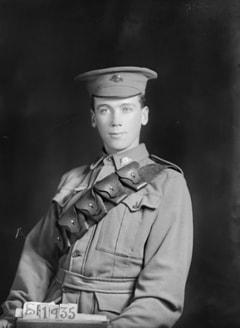
1272 Private
Ernest Ballinger
29th Bn. Australian Infantry, A. I. F.
15th June 1918, aged 23.
Plot XII. F. 1.
Inscription "Safe In The Arms Of Jesus"
Click on image to enlarge
Son of Thomas and Louisa Ballinger, of Dunkeld, Victoria, Australia. Native of Hochkirch.
Studio portrait of Private (Pte) Ernest Ballinger 29th Battalion AIF a bee farmer of Dunkeld near Hamilton, Victoria. He enlisted on 20 July 1915 and embarked on HMT Ascanius 10 November 1915 initially for Suez and then on to Marseilles, disembarking on 23 June 1916. He was captured at Fleurbaix 30 July 1916 and interned as a prisoner of war (POW) at Gefangenenlager Dulmen Germany. He was admitted to hospital at Friedrichsfeld on 8 June 1918 and died of meningitis on 15 June 1918 at 23 years of age.
Ernest Ballinger
29th Bn. Australian Infantry, A. I. F.
15th June 1918, aged 23.
Plot XII. F. 1.
Inscription "Safe In The Arms Of Jesus"
Click on image to enlarge
Son of Thomas and Louisa Ballinger, of Dunkeld, Victoria, Australia. Native of Hochkirch.
Studio portrait of Private (Pte) Ernest Ballinger 29th Battalion AIF a bee farmer of Dunkeld near Hamilton, Victoria. He enlisted on 20 July 1915 and embarked on HMT Ascanius 10 November 1915 initially for Suez and then on to Marseilles, disembarking on 23 June 1916. He was captured at Fleurbaix 30 July 1916 and interned as a prisoner of war (POW) at Gefangenenlager Dulmen Germany. He was admitted to hospital at Friedrichsfeld on 8 June 1918 and died of meningitis on 15 June 1918 at 23 years of age.
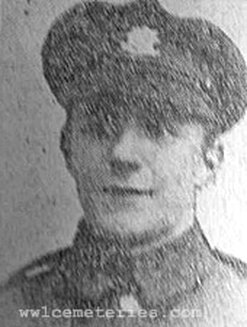
84268 Private
Herbert Barnes
53rd Cheshire Regiment
Died of Pneumonia 8th April 1919, aged 18.
Plot IX. C. 18.
Son of Mary Ann Ingham (formerly Barnes), of 25, Ribblesdale St., Burnley, and the late John Barnes.
Herbert Barnes
53rd Cheshire Regiment
Died of Pneumonia 8th April 1919, aged 18.
Plot IX. C. 18.
Son of Mary Ann Ingham (formerly Barnes), of 25, Ribblesdale St., Burnley, and the late John Barnes.
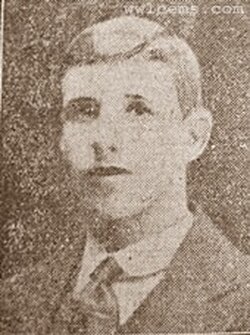
30923 Private
Edward Bradshaw
1/4th Loyal North Lancashire Regiment
Died of pneumonia 26th October 1918 whilst a prisoner, aged 21.
Plot XI. G. 8.
Son of Robinson and Rebecca Bradshaw, of 68, Railway Terrace, Padiham, Burnley.
Edward Bradshaw
1/4th Loyal North Lancashire Regiment
Died of pneumonia 26th October 1918 whilst a prisoner, aged 21.
Plot XI. G. 8.
Son of Robinson and Rebecca Bradshaw, of 68, Railway Terrace, Padiham, Burnley.
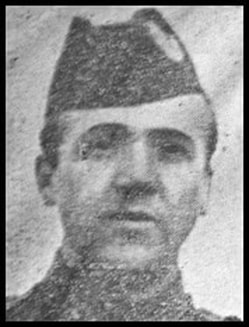
24946 Private
Herbert Hardman
13th Canadian Army (Quebec Regiment)
Died of wounds 8th October 1915 whilst a P.O.W., aged 28.
Plot XIII. A. 2.
Formerly lived at 16 Green Street, Burnley, Lancashire.
Son of the late Amos and Sarah Elizabeth Hardman.
Herbert Hardman
13th Canadian Army (Quebec Regiment)
Died of wounds 8th October 1915 whilst a P.O.W., aged 28.
Plot XIII. A. 2.
Formerly lived at 16 Green Street, Burnley, Lancashire.
Son of the late Amos and Sarah Elizabeth Hardman.
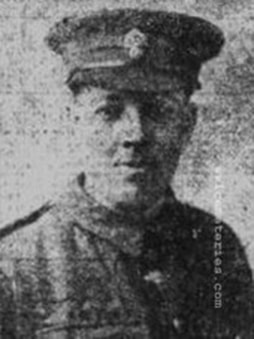
PS/6516 Lance Corporal
Richard Neville Lawson
20th Bn. Royal Fusiliers
29th September 1917, aged 36.
Plot V. F. 8.
Son of Mr. W. N. and Susannah Lawson of 80, Hibson Rd., Nelson, Lancs.
Richard Neville Lawson
20th Bn. Royal Fusiliers
29th September 1917, aged 36.
Plot V. F. 8.
Son of Mr. W. N. and Susannah Lawson of 80, Hibson Rd., Nelson, Lancs.
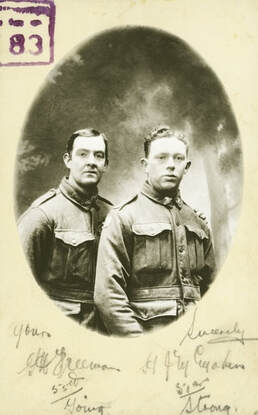
3592 Private
Herbert Joseph McMahen
51st Bn. Australian Infantry, A. I. F.
2nd November 1918, aged 27.
Plot XVI. B. 41.
Inscription "Ever Remembered"
Click on image to enlarge
Son of Joseph Moor McMahen, and Kate Caroline McMahen, of Magner Farm, Coolup, Western Australia.
Studio portrait of two Australian Prisoners of War (POW) 1741 Private (Pte) George Harold Freeman, 55th Battalion from Tweed River NSW and 3592 Pte Herbert Joseph McMahen, 51st Battalion from Coolup, WA. Pte Freeman enlisted at the age of 23 on 11 January 1915 and embarked for overseas on 17 March 1915 aboard HMAT Shropshire. After serving at Gallipoli where he was wounded, he went on to serve on the Western Front where he was again wounded and captured at Fleurbaix, France on 20 July 1916. He was held as a POW in various camps in Germany until repatriated to England on 28 November 1918. Pte Freeman arrived back in Australia on 17 April 1919. Pte McMahen enlisted at the age of 24 on 29 September 1915 and embarked for overseas with the 28th Battalion on 17 January 1916 aboard HMAT Borda. He was wounded in the chest and upper arm and captured at Pozieres, France on 19 August 1916. Pte McMahen was held in a number of POW camps and recovered from his wounds but died of influenza on 2 November 1918. He was buried in the Protestant Cemetery at Recklinghausen and then in 1924 was moved to the Cologne South Cemetery, Germany.
Herbert Joseph McMahen
51st Bn. Australian Infantry, A. I. F.
2nd November 1918, aged 27.
Plot XVI. B. 41.
Inscription "Ever Remembered"
Click on image to enlarge
Son of Joseph Moor McMahen, and Kate Caroline McMahen, of Magner Farm, Coolup, Western Australia.
Studio portrait of two Australian Prisoners of War (POW) 1741 Private (Pte) George Harold Freeman, 55th Battalion from Tweed River NSW and 3592 Pte Herbert Joseph McMahen, 51st Battalion from Coolup, WA. Pte Freeman enlisted at the age of 23 on 11 January 1915 and embarked for overseas on 17 March 1915 aboard HMAT Shropshire. After serving at Gallipoli where he was wounded, he went on to serve on the Western Front where he was again wounded and captured at Fleurbaix, France on 20 July 1916. He was held as a POW in various camps in Germany until repatriated to England on 28 November 1918. Pte Freeman arrived back in Australia on 17 April 1919. Pte McMahen enlisted at the age of 24 on 29 September 1915 and embarked for overseas with the 28th Battalion on 17 January 1916 aboard HMAT Borda. He was wounded in the chest and upper arm and captured at Pozieres, France on 19 August 1916. Pte McMahen was held in a number of POW camps and recovered from his wounds but died of influenza on 2 November 1918. He was buried in the Protestant Cemetery at Recklinghausen and then in 1924 was moved to the Cologne South Cemetery, Germany.
Outdoor portrait of veterinary surgeon Captain Henry Oswald Oliver, Australian Army Veterinary Corps, in the officers' lines of the camp of the 1st Australian Light Horse Brigade at Maadi, outside Cairo. In August 1915 he was deemd to be medically unfit and was returned to Australia. In 1917 he re-enlisted and joined the 35th Battalion with the rank of Private. Private Oliver was later taken prisoner of war and reported as dying at Munster Prisoner of War camp on 20 August 1918. He was aged 43 years. Plot XVII. B. 10. Son of John Henry and Annie Oliver. Inscription "Until The Day Dawns"
Cologne Memorial
Picture © Geerhard Joos
The memorial takes the form of panels set inside the north shelter building at the entrance to the Commonweatlh plots in Cologne Southern Cemetery. It commemorates 25 servicemen of the United Kingdom who died in Germany and who have no known grave. Of these, 19 are known to have died as prisoners and their places of burial are not recorded. The other six died after the Armistice by drowning and their bodies were not recovered.
Commemorated: United Kingdom 44.
Commemorated: United Kingdom 44.

